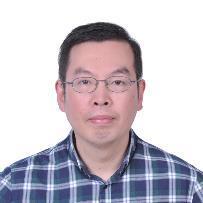Keynote Speakers

Prof. Jianhua Zhang, Oslo Metropolitan University, Norway
Jianhua Zhang is has been Professor at Department of Computer Science, Oslo Metropolitan University, Norway, since 2018. From 2007-2017 he was Professor with School of Information Science and Engineering, East China University of Science and Technology, Shanghai, China. From 2017 to 2018 he was Scientific Director at Vekia (a machine learning driven IT company), Lille, France.
Dr Zhang received his PhD in electrical engineering and computer science from Ruhr University Bochum, Germany, in 2005 and did postdoctoral research at Intelligent Systems Research Lab, University of Sheffield, UK, from 2005 to 2006. He was a Guest Scientist at TU Dresden, Germany, from 2002 to 2003 and Visiting Professor at TU Berlin, Germany between 2008 and 2015 and the University of Catania, Italy in 2024.
Dr Zhang has worked in the fields of AI, control systems, and signal processing since mid-1990s. His current research interests include computational intelligence, machine learning, intelligent systems and control, biomedical signal processing, and neurocomputing. So far he has published four books, 11 book chapters, and around 200 peer-reviewed journal and conference papers in those areas.
Dr Zhang served as Chair of IFAC (International Federation of Automatic Control) Technical Committee on Human-Machine Systems (2017-2023) and Vice Chair of IEEE Norway Section (2019- 2023). He currently serves as Vice Chair of IFAC Technical Committee on Human-Machine Systems (2023-) and Vice Chair of IEEE CIS (Computational Intelligence Society) Norway Chapter (2019-). He is on editorial board of four international journals, including Frontiers in Neuroscience, Cognitive Neurodynamics (Springer), and Cognition, Technology & Work (Springer). In addition, he was invited to serve as keynote speaker or chair for a number of international conferences.
Dr Zhang was listed in Stanford/Elsevier's World Top 2% Scientists Rankings in 2023 and 2024.

Prof. Sami Brandt, IT-University of Copenhagen, Denmark
Prof. Sami S. Brandt works as full professor at IT University of Copenhagen and he is the head of the audio–visual computing research group at ITU. He is also currently the project coordinator of the EU funded Horizon Europe project XTREME. Previously, he worked as associate professor at ITU and University of Copenhagen, and senior mathematical software developer at 3Shape, Denmark; He has also been nominated as adjunct professor in Machine Vision Group at University of Oulu, Finland. He additionally has project leading experience from Synarc Imaging Technologies A/S, University of Oulu and Helsinki University of Technology, Finland, and he has worked as a research scientist in Malmö University, Sweden, and in Instrumentarium Corporation Imaging Division. He finished his doctoral degree in 2002 in Helsinki University of Technology about the geometric branch of computer vision appled to electron tomography. His research interests are Applied mathematics, Bayesian inverse problems, 3D imaging, mathematical modelling, statistics, geometric computer vision, image processing, image registration, acoustics and audio signal processing, biomedical imaging, and machine learning.



